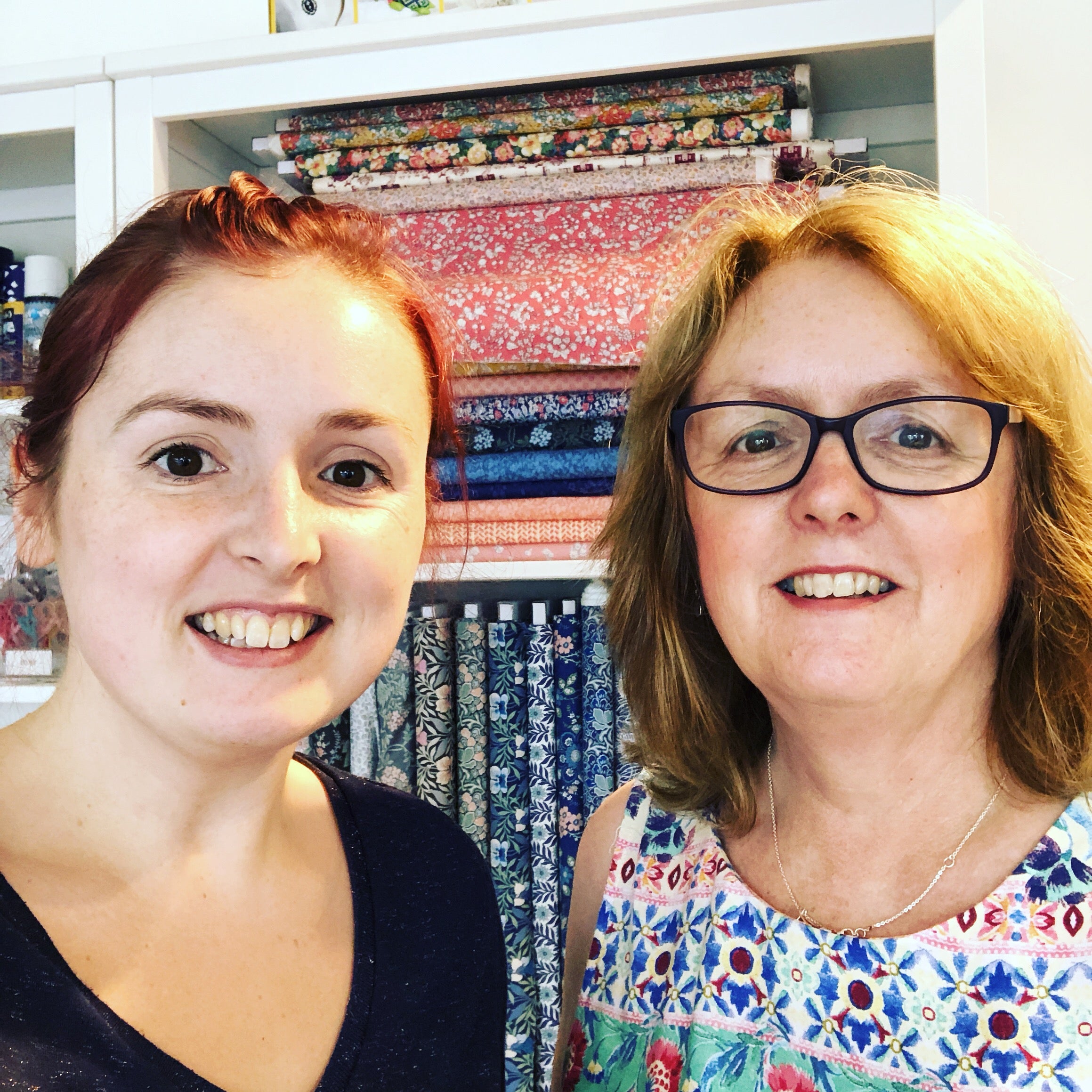New to sewing, or just never really learnt what was what when it came to fabrics? Check out this handy guide to fabric types, which helps explain the most common types of fabric and their uses. A great post to have to hand when looking at new projects!
The Ultimate Fabric Guide
Fabric Fibres
 Natural Cotton - image source Ancient Arts Fibre Crafts
Natural Cotton - image source Ancient Arts Fibre Crafts
Cotton is one of the most widely occurring natural fibres in fabrics. It is comfortable against the skin with a breathable quality, and feels soft and smooth to the touch.
Rayon is a semi-synthetic fibre made from cellulose. It behaves much like a natural fabric despite containing some synthetic elements, and often appears as a lustrous fabric akin to silk.
Linen is one of the oldest types of fibres used in fabric, and is made from flax. It is very strong and durable, whilst remaining cool and breathable, making it ideal for items like trousers or summer suits.
Silk has always been associated as a rich and luxury fabric for hundreds of years, mostly due to the intensive manufacturing methods involved in processing silkworm cocoons. Silk fabrics have a lustrous quality to them, and are extremely versatile - they keep you warm in winter and cool in summer, making it a super comfy fabric to wear. It usually comes in a range of fantastic shades as it is one of easiest fabric fibres to hold dye.
Wool tends to be used less often in fabrics nowadays, but was once a staple fibre in fabrics during the Middle Ages! It is made from the hair of sheared animals, spun and woven into strands and then fabric. It's greatest quality is its warmth, and it is also breathable. Wool can come in a variety of textures from a super soft, fine weave like cashmere to a more scratchy and coarse weave.
Synthetic Fibres are often also added in conjunction to these natural fibres to produce similar fabrics at a cheaper cost. One common example of this is polycotton, which is often used in place of 100% cotton fabric as a cheaper alternative that behaves in much the same way as pure cotton would. The most common synthetic fibres are nylon and polyester.
Common Fabric Types
Quilting Cotton
is one of the most widely available and widely used fabrics. It is very versatile and can be used in a mix of dressmaking, quilting and craft projects. It comes in a wide variety of patterns, designs and colours and ranges in quality.
Chiffon
is a very light and transparent fabric that is often used for a fluid drape to a garment. It can be made from a range of fibres, including rayon, polyester or silk. It has a delicate and soft quality to it which is often desirable for evening or occasion wear.
Organza
is another light and sheer fabric, but with more stiffness than chiffon. It is often used over lining fabrics for a beautiful sheen over the top, or can also be used as an interfacing or interlining for other light fabrics.
Jersey
is another commonly used fabric for dressmaking, due to its stretch. It is a knitted rather than woven fabric, making it stretch beautifully and accommodate shape well. It is often used for more casual garments or body con style garments. It's often a mix of cotton, wool, silk, rayon, nylon or polyester.
Crepe
is available in a variety of thicknesses, and possesses a wonderful drape, making it great for elegant dressmaking. It is slightly crinkly in texture and usually made from silk, polyester, rayon or wool.
Lawn
is a combed cotton, once again with a light quality. It has a good balance of stiffness and drape, but comes in different weights. Finer lawns can have a silky texture.
Georgette
is sometimes used in place of chiffon, for a heavier weight fabric. It is semi-sheer and often available in a good variety of colours and designs.
Habotai/China Silk
is one of the most beautiful lining fabrics ever! It is so light that it is not usually used to make garments alone, but sits so comfortably against the skin that it is perfect for lining. It is made wholly of silk.
Shirting
is a cotton fabric designed specifically for making shirts due to its medium weight - it is easy to tailor whilst being breathable and comfortable against the skin. It comes in a wide variety of patterns and colours, as well as a wide range of quality.
Charmeuse
is a woven satin fabric that is crinkly textured on one side and shiny on the other. It flows and drapes well, making it ideal for making dresses. It is often made using silk, rayon or polyester.
Flannel
can be made from either cotton or wool. It is a brushed fabric with a soft surface texture. Lighter flannel is made from cotton and is used for garments like shirts, whereas heavier wool flannel is suitable for garments such as suits.
Taffeta
is a beautiful fabric that is often used for evening and occasion wear due to its luxurious semi-shiny texture. It is reasonably crisp and therefore able to hold some structure, making it ideal for things like party dresses. It can be made using a variety of fibres of varying quality, including silk, rayon, nylon and polyester.
Dupioni
is a fabric made of silk, that uses irregular threads in order to create "slubs" in the fabric texture. It is fairly stiff and crisp, but it tends to fray a bit.
Worsted Wool
is a sturdy fabric made from wool, that is ideal for suiting due to its reasonably stiff and strong qualities.
Tweed
is quite well known for its recognisable patterns - often using multiple colours woven in to create a mottled or flecked effect with lots of texture. Made from wool, it is quite sturdy in nature, making it a popular choice for suiting and skirts.
Weaves & Knits
Plain weave is a simple weave in which the threads form a criss cross pattern. It is the most common form of weave for fabrics, including cotton, lawn, taffeta and more.
Twill is a woven fabric with a diagonal pattern, making each side of the fabric look different and therefore creating and right and wrong side. Fabrics such as denim use a twill weave.
Satin weave is used to create a sheen or shiny surface on the fabric. Common examples are duchess satin, sateen, and silk charmeuse.
Knits are made differently to weaves, using a knitting machine to create loops of fabric that interlock and create a stretchier fabric than traditional weaves. Because of this, sewing with knits can be harder and requires more concentration and greater skill, as they are more prone to warping during sewing. Sometimes it is necessary to use more specialist equipment such as different needles for your sewing machine, and special stitches for stretch fabric that can accommodate stretch without breaking.
Weight
Fabrics come in a variety of weights or thicknesses, from light to heavy. Heavy fabrics are thicker and contain more weight, but can add bulk when used in dressmaking. Light fabrics such as cottons, tend to be thinner to the touch, and even to the eye with a sheerness about them. Consider the weight of the fabric not only in how it will sit or add bulk, but also how heavy it is to wear. Light weight fabrics are more suited to summer, whereas heavy fabrics tend to be more wintery.
Drape
Drape is a very important factor to consider when purchasing fabrics for dressmaking. The weight of the fabric can affect its drape: for example, heavy fabrics tend to be a bit stiffer, leading to a more structured look. Drape is mostly affected by the stiffness of the fabric - the stiffer the fabric is, the more structured it will look. Lighter fabrics such as chiffon are much more fluid and give a softer drape and flowing feel.
Stretch
The amount of stretch in a fabric depends upon the way it is made and any elastic components in the fabric make-up. There is a certain amount of give or stretch in all fabrics, but often these can be limited in fabrics such as quilting cotton. The fabrics with the most stretch tend to be ones that are knitted rather than woven, and/or incorporate elastic elements such as lycra.




